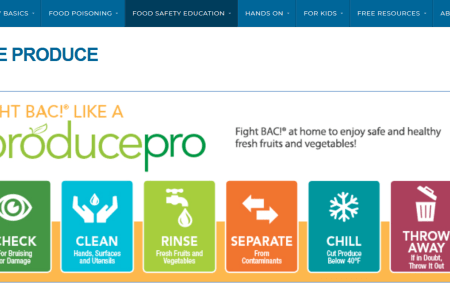
Although December is recognized as root vegetable month, root vegetables can be enjoyed year-round. Root vegetables come in all different shapes and colors, and they provide a variety of important nutrients. Continue reading to learn about root vegetables, including potatoes, rutabagas, parsnips and more, or jump to the recipes.
Counseling Corner
Root vegetables provide fiber and many micronutrients, which vary depending on the type of root vegetable. See below under “Types of Root Vegetables” for more information on the nutrients provided by specific types of root veggies. Visit the Eye on Nutrition series to learn more about some nutrients and dig into the Meal of the Month series to find other nutrient-specific recipes.
Types of Root Vegetables
There are many different kinds of root vegetables that boast unique flavors and nutrients. Some can be consumed raw and others need to be cooked in order to enjoy. Root vegetables can be incorporated into side dishes or featured in the main meal!
- Beets: Beets have an earthy and sweet flavor and contain folate, riboflavin, potassium, and manganese. They come in vibrant red and golden varieties.
- Carrots: Known for their bright orange color, carrots also may be available in purple, white, and yellow varieties. They are packed with vitamin A.
- Cassava (Yuca): Cassava is used to make tapioca and cassava flour. It is a starchy tuber, similar to a potato, that grows in tropical regions of the world, including in Puerto Rico. They cannot be eaten raw, the skin must be peeled, and they must be cooked well, since they contain toxins in raw form.
- Jicama: Common to Mexico and Central America, jicama is crisp and sweet, and has a similar flesh to apples. Jicama contains vitamin C, iron, and vitamin B6.
- Onions: They may make you cry, but onions are integral to adding flavor to many recipes and come in different varieties, such as red, yellow, or sweet. Onions are a source of vitamin C.
- Parsnips: Parsnips look similar to carrots in shape and size, but they are white, sweeter, and taste distinct from carrots. They contain vitamin K, zinc, and pantothenic acid.
- Potatoes: The tuber that is turned into so many American classics from mashed potatoes to roasted potatoes come in many varieties, including russet, fingerling, red, and Yukon gold. Potatoes, including the nutrient-rich skin, contain potassium, vitamin C, and vitamin B6.
- Radishes: There is nothing like biting into a crisp, spicy radish! There are many varieties of radishes, including red globe and daikon radishes. Radishes are also high in vitamin C and potassium.
- Rutabagas: In addition to having a fun name, pronounced “roo·tuh·bay·guh,” rutabaga is sweet and has a subtle flavor similar to cabbage and turnips. Rutabagas are not just a root veggie but are also considered a cruciferous vegetable. They usually are purple and light yellow-orange in color and contain vitamin C.
- Sweet Potatoes & Yams: These two vegetables may be confused for one another; however, sweet potatoes have an orange skin and orange, white, or purple flesh and are more common in the U.S. due to the climates for growing. Yams have a brown skin with white flesh and are often less sweet and more starchy than sweet potatoes. They both contain vitamin A, vitamin C, and potassium and may be interchangeable in some recipes.
- Taro Root: Taro is a staple in Polynesia, including in Hawaii where it is often turned into poi, a sticky taro paste that is traditionally eaten with the fingers. Taro can also be used to make chips and flour, and it can be fried or roasted but taro cannot be eaten raw. It contains many nutrients, including vitamin B6 and potassium.
- Turnips: Young turnip roots are eaten raw in salads or can be pickled. The roots are also cooked and served whole or mashed and can also be used in stews. Turnips are high in vitamin C.
Tips & Ideas to Share
Choose: Choose root vegetables that feel firm and avoid ones with soft spots, bruises, or visible damage.
Wash: Make sure to wash and scrub root vegetables very well, since they often have a layer of dirt leftover from growing underground.
Prepare: Root vegetables are often peeled and sliced or chopped up before cooking. However, the skin of some root vegetables, like potatoes, Jerusalem artichokes, and beets, is edible, and contains important nutrients! Many root vegetables can also be cooked whole (parsnips, carrots, beets, garlic, and potatoes) and saves a preparation step.
Storage: Some root vegetables should be stored in the pantry, while others need to be refrigerated or frozen to maintain quality and freshness.
- Potatoes can be stored for 1-2 months in the pantry and sweet potatoes and yams can be stored for 2-3 weeks in the pantry.
- Onions can be stored for 1 month in the pantry or 2 months in the refrigerator.
- Beets last 1-2 weeks in the refrigerator.
- Carrots and parsnips can be stored for 2-3 weeks in the refrigerator.
- For more specific root vegetable storage information and guidance, refer to the USDA FoodKeeper App website.
Uses: Root vegetables can be used in a variety of ways depending on the type, but they are often great for roasting, boiling, baking, or sautéing. Some root vegetables, like radishes, peeled jicama, and carrots can be eaten raw in salads or paired with dips. See below for recipes and more inspiration for using root vegetables.
Flavor: Garlic, ginger, and turmeric are root vegetables too! Garlic and ginger can add sweet, spicy, and pungent flavors to dishes. Fresh or ground turmeric root can also add flavor and spice to meals.
Recipes
Beets
Carrots
Carrot and Sweet Potato Soup (available in Spanish)
Jicama
Parsnips
Roasted Root Vegetables (available in Spanish)
Potatoes
Easy Baked Potato Salad (available in Spanish)
Veggie Mash-up (available in Spanish)
Radishes
Fresh Cabbage and Tomato Salad
Rockin Radish Salad (available in Spanish)
Sweet Potatoes
Baked Batatas and Apples (available in Spanish)
Caramelized Sweet Potatoes, Quinoa, and Greens
Turnips
Garden Stir Fry (available in Spanish)
Honey Glazed Turnips (available in Spanish)
Sesame Turnips and Carrots (available in Spanish)
Turnip Pancakes (available in Spanish)

 WIC Works Resource System
U.S. Department of Agriculture
WIC Works Resource System
U.S. Department of Agriculture



